Expert tips
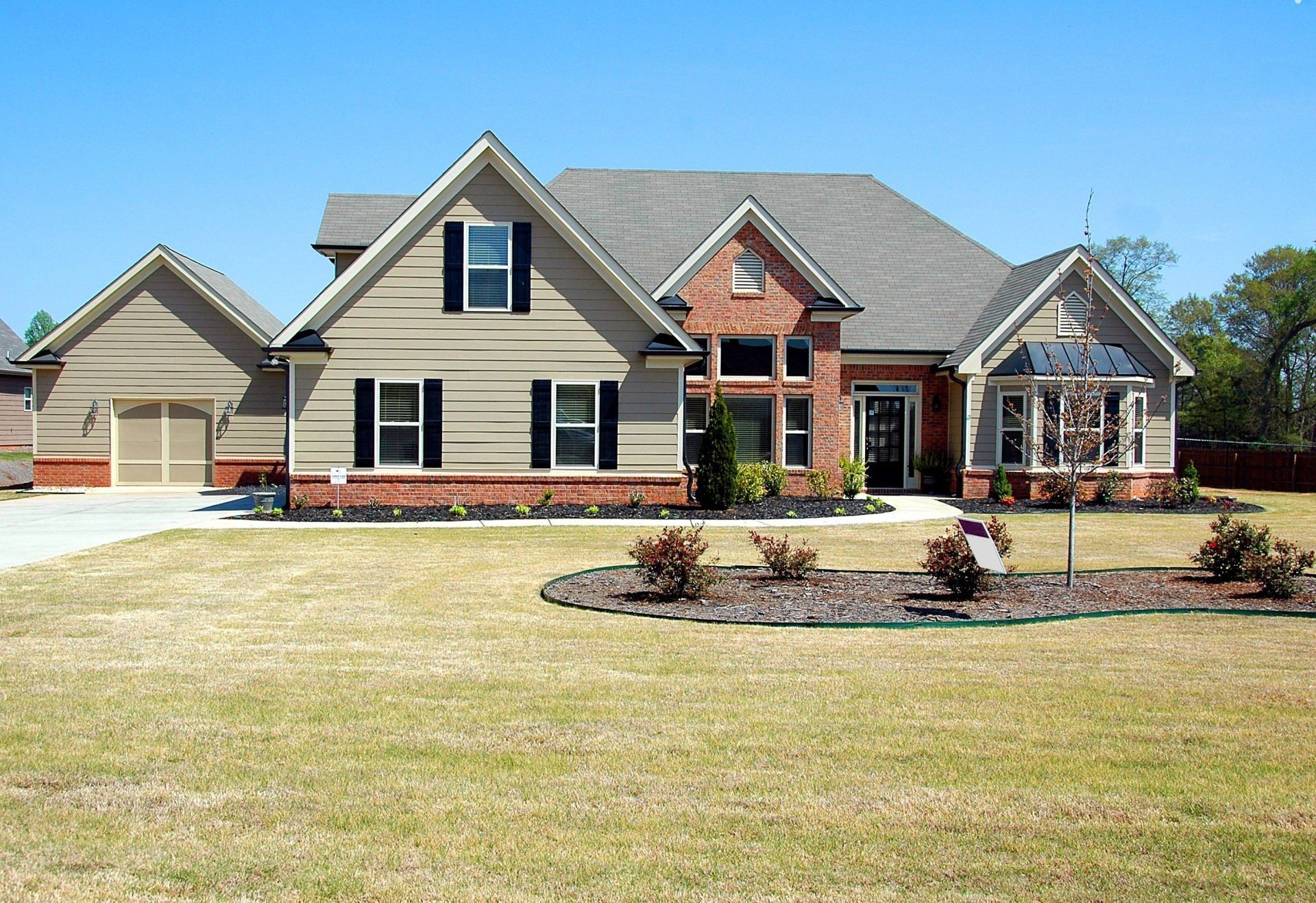
If you’ve ever watched a home renovation show on TV, you’ve probably seen a dramatic transformation happen in what feels like no time — a full kitchen gutted and rebuilt between commercial breaks, or a complete home makeover wrapped up in a week. The reality of construction, however, looks a lot different. Renovations are exciting, but they also require planning, coordination, skilled labor, and sometimes a little patience. At Higher Point General Contracting, we believe our clients deserve honesty and transparency throughout the entire remodeling process. A well-planned project always runs more smoothly, and understanding what affects a timeline can help homeowners set realistic expectations and enjoy the journey — not just the finished result. Every Project Is Unique No two renovation projects are identical. Even homes that look similar on the outside often have completely different underlying structures, systems, and quirks that affect how long a remodel takes. A small bathroom update might take just a few weeks, while a full kitchen renovation — complete with new plumbing, cabinetry, and flooring — can stretch over two to three months. Additions, major structural changes, or full-home remodels can extend into several months or more depending on complexity. Key factors that influence your project timeline include the scope of work, permits, and material availability. A straightforward cosmetic refresh — paint, flooring, and new fixtures — can move quickly, while anything involving moving walls, electrical work, or plumbing lines will naturally take longer. Permitting is another big variable. Townships across Bucks, Montgomery, and Philadelphia counties all operate on different review schedules. Some permits are approved within a few days, while others take several weeks depending on backlogs or inspection availability. Material delays can also affect timing, especially if you’ve chosen custom cabinetry, specialty tile, or high-end fixtures. At Higher Point, we help clients plan ahead to minimize these disruptions, but even with the best preparation, lead times can change — especially for made-to-order items or products shipped from overseas. The Timeline Starts Before the First Hammer Swings A lot of homeowners think the renovation clock starts when our crew shows up with tools — but in reality, the project begins long before demolition day. The pre-construction phase is one of the most important parts of a successful renovation. During this stage, we finalize design choices, layouts, and product selections. We also prepare detailed estimates, submit permits, and schedule material deliveries so that everything aligns once construction begins. Rushing through these early steps can lead to frustration later — like discovering a backordered fixture halfway through a bathroom remodel or realizing cabinetry measurements need adjustment after walls are already opened up. Taking time to properly plan ensures your project runs efficiently once we’re on-site. This proactive approach prevents costly mistakes, saves time in the long run, and reduces the kind of stress that can make renovations overwhelming. Quality Work Takes Time We completely understand how eager homeowners are to see progress — and how tempting it can be to wish for a faster turnaround. But when it comes to construction, quality craftsmanship and long-term durability take precedence over speed. Every phase of the process, from framing and electrical work to tile setting and painting, requires precision and care. Materials need time to set, cure, and acclimate properly to ensure they last for years to come. For example, rushing drywall finishing or flooring installation can lead to visible imperfections later. Similarly, trimming or cabinetry installation demands patience and meticulous detail to achieve that polished, professional look. At Higher Point, we build for longevity — not quick fixes. Our goal is always to leave you with a space that looks incredible the day it’s finished and still feels solid, safe, and stylish ten years down the road. Expect the Unexpected Even with the most detailed plans, renovations often come with surprises — especially in older homes. Once walls are opened up, we might find hidden water damage, outdated wiring, unlevel floors, or plumbing that isn’t up to current code. These discoveries can temporarily pause a project while we evaluate and correct the issue safely and properly. The key difference between a stressful delay and a smooth adjustment is communication. At Higher Point, we make sure our clients are informed every step of the way. If something unexpected arises, we’ll walk you through what we found, explain your options clearly, and update the schedule if needed. This approach keeps you in control of your project while ensuring everything is done correctly and up to standard. Ultimately, it’s better to spend a few extra days fixing a problem the right way than to rush and risk future damage or repairs. The End Result Is Worth It When the last nail is set, the paint is dry, and the dust has cleared, you’ll finally walk into a space that feels brand new — customized, functional, and designed around your lifestyle. The process may take time, but every step leads to a finished product that truly adds comfort, beauty, and value to your home. We often remind clients that a renovation is not just a construction project — it’s an investment in how you live every day. Taking the time to do it right ensures you’ll enjoy the results for years to come, rather than wishing you’d made different choices later. Let’s Talk About Your Project Thinking about starting a renovation? Whether you’re updating your kitchen, remodeling a bathroom, finishing a basement, expanding your living space with an addition, or upgrading your home’s exterior, our team at Higher Point General Contracting can guide you through every stage — from concept to completion. We’ll help you set realistic expectations, establish a clear timeline, and manage your project with honesty, communication, and craftsmanship that speaks for itself. Contact us to turn your vision into a finished renovation.
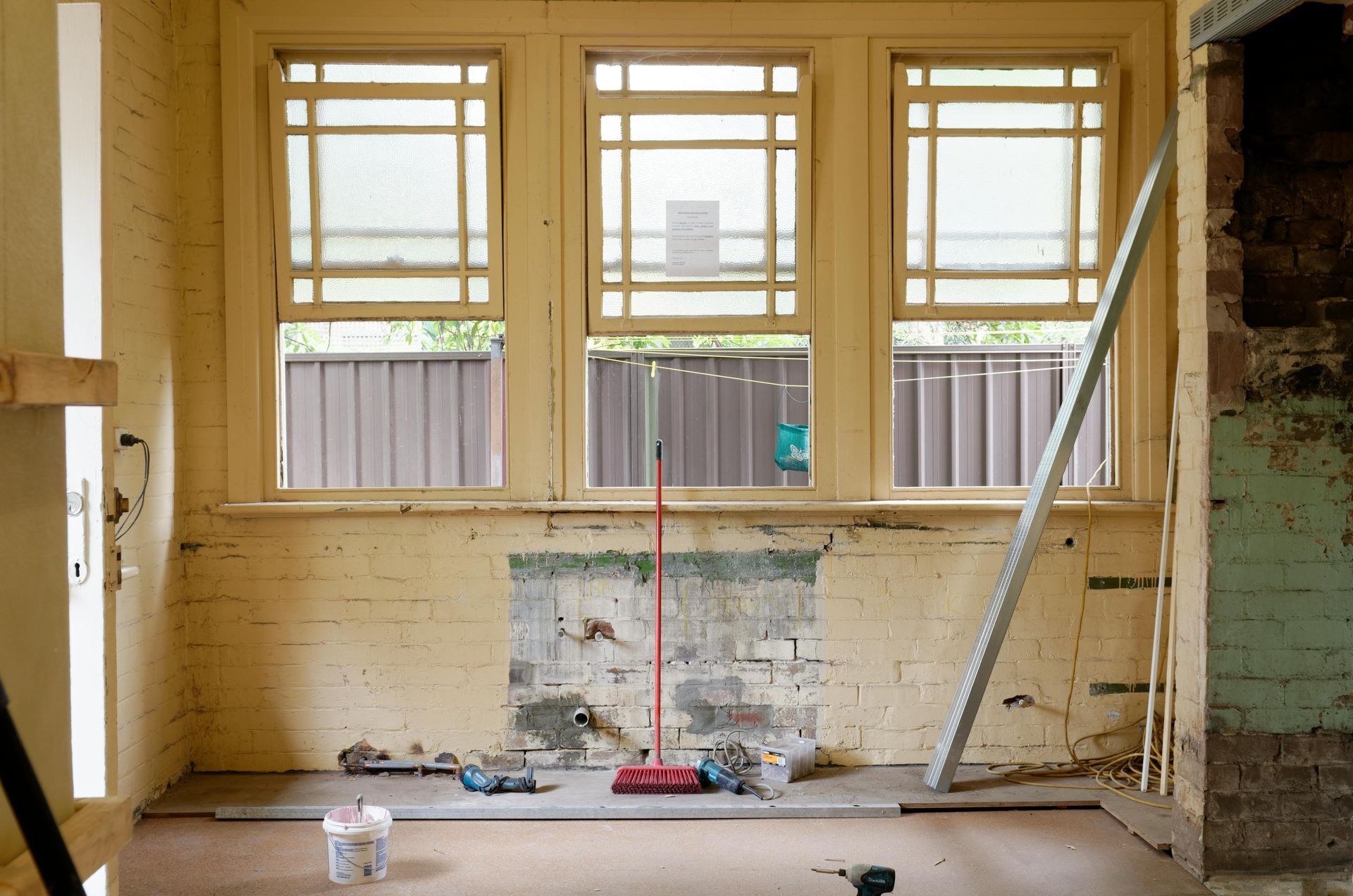
Starting a home renovation is one of the most exciting projects a homeowner can take on. Whether it’s reimagining your kitchen, finishing a basement, or giving your entire home a fresh look, the idea of transforming your space is thrilling. But without careful planning and the right guidance, that dream project can quickly become stressful and expensive. At Higher Point General Contracting, we’ve worked with many homeowners who learned the hard way, and we want to help you avoid the same mistakes. Here are five of the most common renovation missteps we see—and how you can prevent them. 1. Skipping the Planning Stage It’s easy to get caught up in the excitement of a renovation and jump straight into demolition. But without a clear plan, things can go off track fast. Homeowners who skip the design and planning stage often end up with delays, unexpected costs, and frustration. The best way to avoid this is to work with a contractor who will help you map out a detailed design, scope of work, and project timeline before any work begins. A strong plan ensures that the finished project matches your vision while staying on time and within budget. 2. Underestimating the Budget Budget surprises are one of the top frustrations homeowners face during renovations. Renovation shows on TV often make projects look less expensive than they really are, and hidden issues can surface once walls or floors are opened up. Old wiring, plumbing problems, or structural repairs are just a few of the surprises that can add costs. To protect yourself, plan for a contingency fund of at least 10–20% of your total budget. This cushion allows you to handle the unexpected without derailing the entire project. 3. Choosing the Wrong Materials Selecting materials based on looks alone is another common mistake. That gorgeous marble countertop may be stunning, but if your family is busy and spills are common, the upkeep might not be practical. Similarly, certain flooring options may look nice but won’t stand up to heavy traffic or pets. Instead, aim for a balance of style, durability, and maintenance. For example, luxury vinyl plank (LVP) flooring delivers the beauty of hardwood with better water resistance and easier care. A professional contractor can help you choose the right products that suit your lifestyle and long-term needs. 4. DIYing When You Need a Pro The rise of DIY tutorials has empowered many homeowners, but it’s important to know where to draw the line. While painting, installing shelves, or small cosmetic upgrades can be great DIY projects, electrical, plumbing, and structural work should always be left to licensed professionals. Attempting these jobs yourself can create safety hazards, code violations, or costly repairs down the road. Hiring a pro may cost more upfront, but it ensures the job is done safely and correctly the first time. 5. Ignoring Function for Style It’s natural to want your home to look beautiful, but style shouldn’t come at the expense of functionality. A kitchen with no storage, a bathroom with poor lighting, or a bedroom without enough closet space may look amazing in photos but will cause frustration in everyday life. When designing your renovation, think about how your family actually uses each space. Do you need room to entertain? Storage for kids’ toys? A quiet home office? Keeping function top of mind will make your new space both stylish and practical. Renovating your home should be a rewarding experience, not a stressful one. By taking the time to plan carefully, set a realistic budget, choose smart materials, know when to call in professionals, and design with functionality in mind, you can avoid the most common pitfalls and enjoy the process. At Higher Point General Contracting, we specialize in helping homeowners create spaces that are both beautiful and built to last. If you’re ready to start your next project, reach out to our team—we’d love to help you bring your vision to life.

Fall is a season of transition. The air turns crisp, the leaves change color, and we begin to shift our routines indoors. It’s also the perfect time to give your home some extra attention before winter weather arrives. Preparing your home for fall isn’t just about cozy décor and pumpkin spice candles—it’s about making sure your home is safe, efficient, and ready to withstand the colder months ahead. At Higher Point General Contracting, we believe that proactive maintenance saves time, money, and stress, and helps homeowners enjoy peace of mind all season long. Here’s a detailed guide to preparing your home for fall. 1. Inspect Your Roof & Gutters Your roof is your home’s first line of defense against the elements, so fall is the ideal time to inspect it for damage. Look for missing or curling shingles, signs of leaks, or areas that may need professional repair. Gutters also deserve special attention—clogged gutters can lead to water backups, ice dams, and even damage to your foundation. Make sure to clear out leaves, twigs, and debris. Confirm that your downspouts direct water at least a few feet away from the house to keep your foundation safe from water infiltration. 2. Seal Windows & Doors Drafty windows and doors are one of the biggest culprits of high energy bills in the colder months. Take time to check the weatherstripping around doors and replace any that is cracked or worn out. Caulking gaps around window frames and trim is another inexpensive fix that makes a huge difference. If your home has storm windows, fall is the time to put them in place—they add a layer of insulation that helps keep warmth inside where it belongs. 3. Service Your Heating System A well-maintained heating system ensures your home will be warm and comfortable throughout fall and winter. Schedule a professional HVAC technician to inspect your furnace or boiler before the first cold snap. They’ll check for safety issues, ensure the system is running efficiently, and make any necessary repairs. Don’t forget to change your HVAC filters regularly—clean filters improve indoor air quality and reduce energy costs. Testing your thermostat now is also wise, and if you’re looking to save on heating bills, consider upgrading to a programmable or smart thermostat. 4. Fireplace & Chimney Maintenance If you have a fireplace, whether wood-burning or gas, fall is the season to prepare it for use. For wood-burning fireplaces, a chimney sweep should inspect and clean your chimney to remove soot, debris, and creosote buildup, which can cause dangerous chimney fires. Check that your damper opens and closes properly and stock up on dry firewood if needed. Gas fireplaces should also be inspected to ensure safe operation and prevent carbon monoxide risks. 5. Outdoor Prep Your yard and exterior need attention too. Rake up fallen leaves not only to keep your lawn healthy but also to prevent slips and clogged drains. Trim back any dead branches that could break off in winter storms and damage your home. If you have a sprinkler system, drain and shut it off to prevent freezing. Disconnect and store garden hoses, and cover or put away outdoor furniture to protect it from the elements. A little care now extends the life of your outdoor spaces and equipment. 6. Safety Check As we spend more time indoors, safety becomes even more important. Test all smoke detectors and carbon monoxide detectors, replacing batteries where needed. This simple step can be life-saving. Check fire extinguishers to ensure they are fully charged and placed in accessible locations like the kitchen and near fireplaces. Also, take a walk around your property at night—replace any burnt-out bulbs and consider adding motion-sensor lighting for security and convenience. 7. Insulation & Attic Care Your attic plays a huge role in keeping your home warm in the fall and winter. Inspect the insulation—if it looks thin or uneven, consider adding more. Proper insulation keeps your heat inside, lowering utility bills and preventing ice dams on your roof. Ventilation is equally important. Clear attic vents to allow airflow, which reduces moisture buildup and prevents mold growth. Final Thoughts Preparing your home for fall may take a weekend or two of work, but the payoff is worth it. A few proactive steps will help you enjoy a safe, comfortable, and energy-efficient home all season long. At Higher Point General Contracting, we’re here to support you with expert inspections, repairs, and upgrades tailored to your needs. Whether it’s sealing up drafts, repairing your roof, or upgrading insulation, we’ll help ensure your home is ready for whatever the colder months bring.

If you live in the Northeast, you’ve probably noticed something over the past few years — outdoor season is getting longer. It’s staying warmer later into the fall, and spring temperatures are arriving earlier. For homeowners, this shift has opened the door to a new way of thinking about their property: Your outdoor spaces aren’t just for summer anymore — they can be enjoyed for 8, 9, even 10 months of the year. At Higher Point General Contracting, we’ve seen a huge rise in requests for luxury outdoor living spaces that combine beauty, comfort, and function. From custom kitchens to backyard wellness retreats, these designs let you soak up more of the fresh air while still enjoying indoor-level amenities. Here’s your guide to the biggest outdoor living trends in 2025 — and why now is the perfect time to create an outdoor space that works nearly year-round. Why Outdoor Living Is Thriving in the Northeast Longer Warm Seasons – Late September now feels like late August used to, and April often brings mild, patio-worthy days. More Time at Home – With remote and hybrid work, people want more options for relaxing and entertaining without leaving their property. Property Value Boost – Professionally designed outdoor spaces can add 8–12% to your home’s value, especially when they’re usable for most of the year. The Top Outdoor Living Trends for 2025 Covered Outdoor Kitchens Built for All-Season Use In the Northeast, a covered, fully equipped outdoor kitchen means you can grill steaks in February or serve a pizza straight from the oven in October without worrying about rain, wind, or early frost. Features homeowners love in 2025: Built-in grills with side burners and warming drawers Outdoor refrigerators and wine coolers Stone or quartz countertops Deep sinks with hot/cold water Weatherproof cabinets for storage Higher Point Tip: Add infrared patio heaters or a ceiling-mounted heating system to make the space comfortable even on cooler nights. All-Season Decks & Patios Composite decking and high-quality pavers are leading the way in durability and style. With the right design, you can enjoy your deck in the fall with a sweater — or even barefoot in early spring. Popular 2025 options: Composite decking in rich, natural tones Stamped concrete with custom patterns Porcelain pavers for a clean, modern look Comfort upgrades for extended seasons: Retractable glass or screen enclosures Radiant floor heating for chilly mornings Outdoor ceiling fans for late-summer humidity Fire Features That Double as Heat Sources Fire pits and fireplaces aren’t just for ambiance — they help extend your outdoor season into November (and sometimes beyond). Trending styles: Linear gas fire pits with LED-lit surrounds Rustic stone fireplaces with built-in seating Compact fire bowls for smaller patios Fire tables for dining spaces Smart Outdoor Lighting Systems With days getting shorter in the fall, good lighting is key to enjoying your space. Smart systems let you adjust color, brightness, and timing from your phone, keeping the party going after dark. Lighting ideas: LED pathway lights for safety String lighting over dining areas Recessed step lighting on decks Uplighting for landscaping Backyard Wellness Spaces As homeowners spend more time outdoors, wellness-focused additions are becoming must-haves. These can turn a backyard into a personal retreat — no plane ticket required. Trending in 2025: Infrared or traditional saunas Cold plunge pools for recovery and circulation Yoga decks with privacy screens Hot tubs with integrated lighting Designing for the Northeast’s Extended Outdoor Season - When creating a luxury outdoor space in this region, keep these tips in mind: - Plan for Variable Weather – Include heating, shade, and enclosures so you can enjoy your space in every season. - Choose Durable Materials – Northeast weather swings require products that handle heat, humidity, and frost. -Think Multi-Use – Design spaces that work for both sunny July afternoons and crisp October evenings. Build Your Year-Round Outdoor Retreat with Higher Point At Higher Point General Contracting, we design and build outdoor spaces that make the most of the Northeast’s increasingly long warm season. From concept to completion, we focus on craftsmanship, comfort, and custom solutions that fit your lifestyle. Whether you dream of cooking under the stars in December or soaking in a hot tub on a brisk March night, we can make it happen.

Bathrooms are no longer just functional spaces — they’ve become personal sanctuaries. In 2025, homeowners are prioritizing comfort, wellness, and high-end finishes when remodeling their bathrooms. At Higher Point General Contracting, we’re seeing a wave of new trends that combine luxury and practicality to create truly elevated spaces. If you're planning a renovation, here are the top bathroom trends you should consider. 1. Spa-Inspired Designs Think oversized walk-in showers, soaking tubs, warm wood accents, and calming, neutral tones. Clients are asking for bathrooms that feel like a day at the spa — complete with dimmable lighting, built-in speakers, and even steam shower systems. Our tip: Adding heated floors and towel warmers is a small investment that makes a big difference in comfort. 2. Natural Materials & Textures Organic design is in. We’re using more natural wood vanities, textured stone tiles, and earth-toned finishes to bring a warm, modern feel to bathrooms. These materials create visual interest without overpowering the space. Pro move: Pairing stone or wood with matte black or brushed brass fixtures creates a balanced, on-trend aesthetic. 3. Wet Rooms & Frameless Glass Wet rooms — where the shower and tub share one waterproofed space — are becoming increasingly popular, especially in high-end and small-space designs. They offer a sleek, open layout and are easier to clean. We recommend: Frameless glass enclosures to enhance the airy feel and highlight tile work. 4. Smart Tech Integration Technology is making its way into bathrooms in subtle but powerful ways: - Smart mirrors with LED lighting and defogging - Voice-activated lighting and music - Water-efficient, touchless faucets and toilets Added value: These upgrades not only increase convenience but also add resale value in today’s tech-savvy market. 5. Bold Accent Walls & Statement Tiles While the overall palette may be calm and neutral, we’re seeing more homeowners request bold tile patterns or colorful accent walls to add personality. Think deep navy, forest green, or terrazzo. Design tip: Use statement tile in one focal area — like the shower wall or backsplash — to elevate the space without overwhelming it. Ready to Refresh Your Bathroom? At Higher Point General Contracting, we help homeowners design and build bathrooms that are stylish, functional, and built to last. Whether you’re going for spa-like serenity or bold luxury, our team can bring your vision to life — on time and on budget. Let’s talk about your bathroom goals. Contact us for a free consultation.
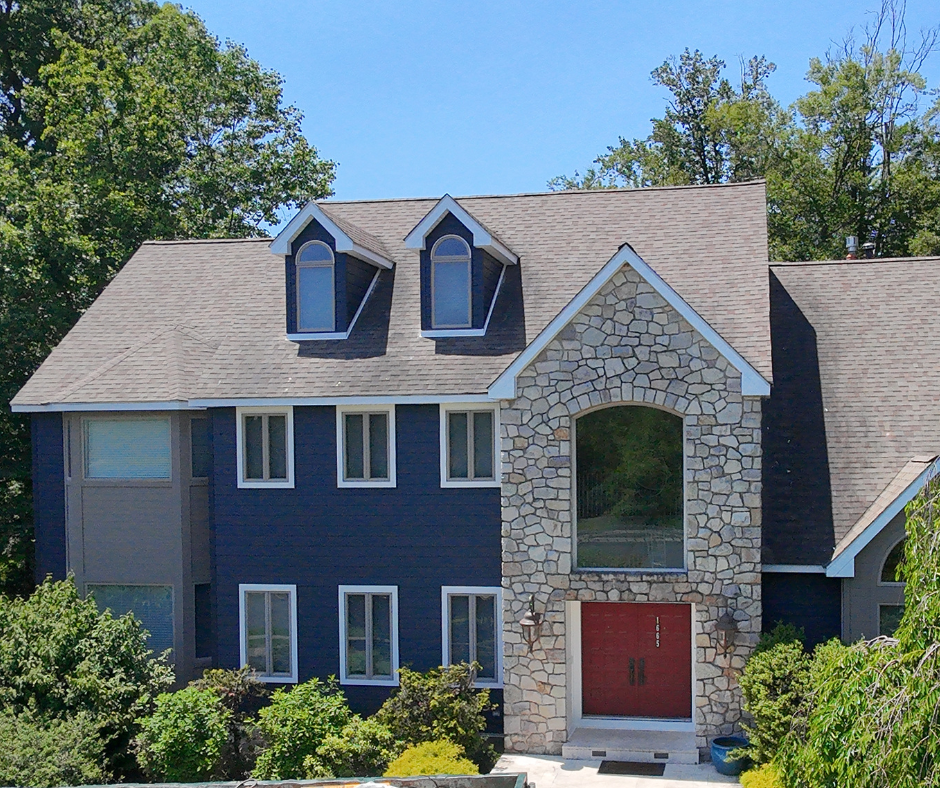
Here in Bucks County, stucco exteriors are common — especially on homes built from the 1980s through the early 2000s. Unfortunately, many of those stucco systems were improperly installed or have simply failed with age, leading to serious water damage, mold, and structural concerns. At Higher Point General Contracting, we specialize in full stucco remediation and exterior upgrades using durable, low-maintenance materials like vinyl and composite siding. If you're seeing signs of stucco failure or just want peace of mind, this guide will walk you through exactly what to expect from the remediation process — and why it’s worth the investment. What Is Stucco Remediation? Unlike a stucco repair (which just patches the surface), remediation is a full removal and rebuild of your home's exterior. We remove damaged stucco, address any underlying issues, and install a weather-tight, modern siding system that protects your home for decades. Our Stucco Remediation Process: Step-by-Step 1. Comprehensive Inspection & Moisture Testing We begin by inspecting your home with moisture meters and infrared technology to locate hidden water intrusion and rot behind the stucco. This step ensures we don’t miss any problem areas. 2. Stucco Removal Next, we carefully remove the entire stucco system down to the sheathing or framing, exposing any damage that needs to be addressed. This is the only way to fully solve moisture issues. 3. Framing & Sheathing Repairs Water damage can lead to mold, wood rot, and compromised framing. We replace damaged wood and insulation as needed — ensuring your home is safe and structurally sound. 4. Installing a Modern Weather Barrier System We apply a code-compliant WRB (Weather Resistant Barrier), including flashing and drainage planes, to keep water out and prevent future damage. This critical layer is your home’s first line of defense. Why Replace Stucco with Vinyl or Composite Siding? Many homeowners in Bucks County are choosing to replace stucco altogether instead of reinstalling it — and for good reason: ✅ Vinyl Siding Affordable & low maintenance Won’t trap moisture like stucco Wide range of styles and colors Resistant to cracking and fading ✅ Composite (Engineered Wood or Fiber Cement) Highly durable in all weather Mimics the look of natural wood Insect- and moisture-resistant Adds resale value & long-term protection Not only do these materials look great, but they also offer far better protection from Pennsylvania’s wet, cold winters and humid summers. The Final Steps: Siding Installation & Finishing Touches After repairs and waterproofing, we install your new siding with precision, adding trim, flashing, and caulking to create a beautiful, finished look. The result? A stunning, worry-free exterior built to handle Bucks County’s climate for years to come. Why Homeowners Across Bucks County Trust Higher Point We’ve helped dozens of local homeowners reclaim their homes from stucco damage — and we do it the right way. From Doylestown to Yardley, Newtown to Warrington, we’ve built a reputation for top-notch craftsmanship, clear communication, and long-lasting results. Ready to Fix Your Stucco Problem for Good? Whether you're dealing with water damage or simply want a more modern, maintenance-free exterior, Higher Point General Contracting has you covered.

As the winter chill fades and the warm embrace of spring takes over, it's the perfect time to revamp the exterior of your home. At Higher Point General Contracting, we specialize in a variety of outdoor home projects designed to improve both the aesthetics and functionality of your space. Whether it’s replacing your roof, upgrading your siding, installing new windows, adding a sunroom, or even building a custom deck or patio, we have the expertise to transform your home into a beautiful retreat. Roofing Replacements: Protect Your Home with a Durable Upgrade Spring is the ideal time to inspect the condition of your roof. After the harsh winter months, your roof might have experienced wear and tear, leaving it vulnerable to leaks and damage. Higher Point General Contracting offers expert roofing replacement services using high-quality materials that will stand the test of time and protect your home. Our professional team ensures the job is done right, minimizing disruptions to your day-to-day life. Siding Replacements: Enhance Curb Appeal and Durability Your siding does more than just add aesthetic value—it shields your home from the elements. If your siding is cracked, faded, or showing signs of age, now is the time to replace it. Higher Point General Contracting offers a range of durable siding options, including vinyl, wood, and fiber cement, so you can find the perfect match for your home. We’ll help you choose the best materials for your needs and ensure that your home stays protected and looking great for years to come. Windows: Upgrade to Energy-Efficient Solutions Old, drafty windows are a major culprit in energy loss and increased utility bills. Replacing outdated windows with energy-efficient models is a smart move for any homeowner looking to reduce energy costs while improving comfort. At Higher Point General Contracting, we offer a variety of window styles, including double-hung, casement, and picture windows, to suit your home’s aesthetic. Our team will work with you to choose the best options and install them with precision to enhance both your home’s appearance and energy efficiency. Awnings: Enjoy the Outdoors in Comfort Awnings are a fantastic way to add shade and style to your outdoor living spaces. Whether you want to protect your patio, deck, or windows from the sun, a custom awning can offer both beauty and functionality. At Higher Point General Contracting, we design and install high-quality, custom awnings that provide protection from the elements while enhancing the look of your home. Choose from a variety of colors and styles to complement your home, and enjoy your outdoor spaces in comfort throughout the season. Sunrooms: Bring the Outdoors In Imagine relaxing in a sunroom, enjoying the beauty of nature while staying comfortable inside your home. Sunrooms are a fantastic way to add natural light and breathtaking views without stepping outside. Higher Point General Contracting specializes in designing and building custom sunrooms that provide a seamless connection between your indoor and outdoor spaces. Whether you're looking for a cozy retreat or a large living area, we can create the perfect sunroom that fits your lifestyle and enhances your home’s value. Decks and Patios: Create the Perfect Outdoor Retreat One of the most exciting ways to enhance your outdoor living space is by adding a custom deck or patio. Higher Point General Contracting can help you design and build the perfect deck or patio to suit your needs. Whether you’re interested in a peaceful outdoor oasis, a place to entertain, or a family-friendly space for outdoor dining, we’ll work with you to create a functional and beautiful outdoor area. We offer a variety of materials, from traditional wood to low-maintenance composite decking, so you can choose the best option for your home. Additions: Expand Your Living Space Spring is also the ideal time to think about expanding your living space. If you're in need of extra room—whether it's for a larger kitchen, an additional bedroom, or a home office—Higher Point General Contracting can help you design and build a custom addition that blends seamlessly with your home. We’ll work closely with you to ensure your new space fits your needs and complements your home’s existing structure, all while staying within your budget and timeline. Why Choose Higher Point General Contracting? At Higher Point General Contracting, we’re dedicated to providing exceptional service and high-quality craftsmanship for every project we undertake. Our team is committed to helping homeowners bring their spring renovation ideas to life with a wide range of outdoor services designed to fit any need. With years of experience and a focus on customer satisfaction, we are your trusted partner for all your home improvement projects. If you're ready to refresh your home's exterior this spring, contact Higher Point General Contracting today! Let us help you create the perfect outdoor space for you and your family to enjoy all season long.
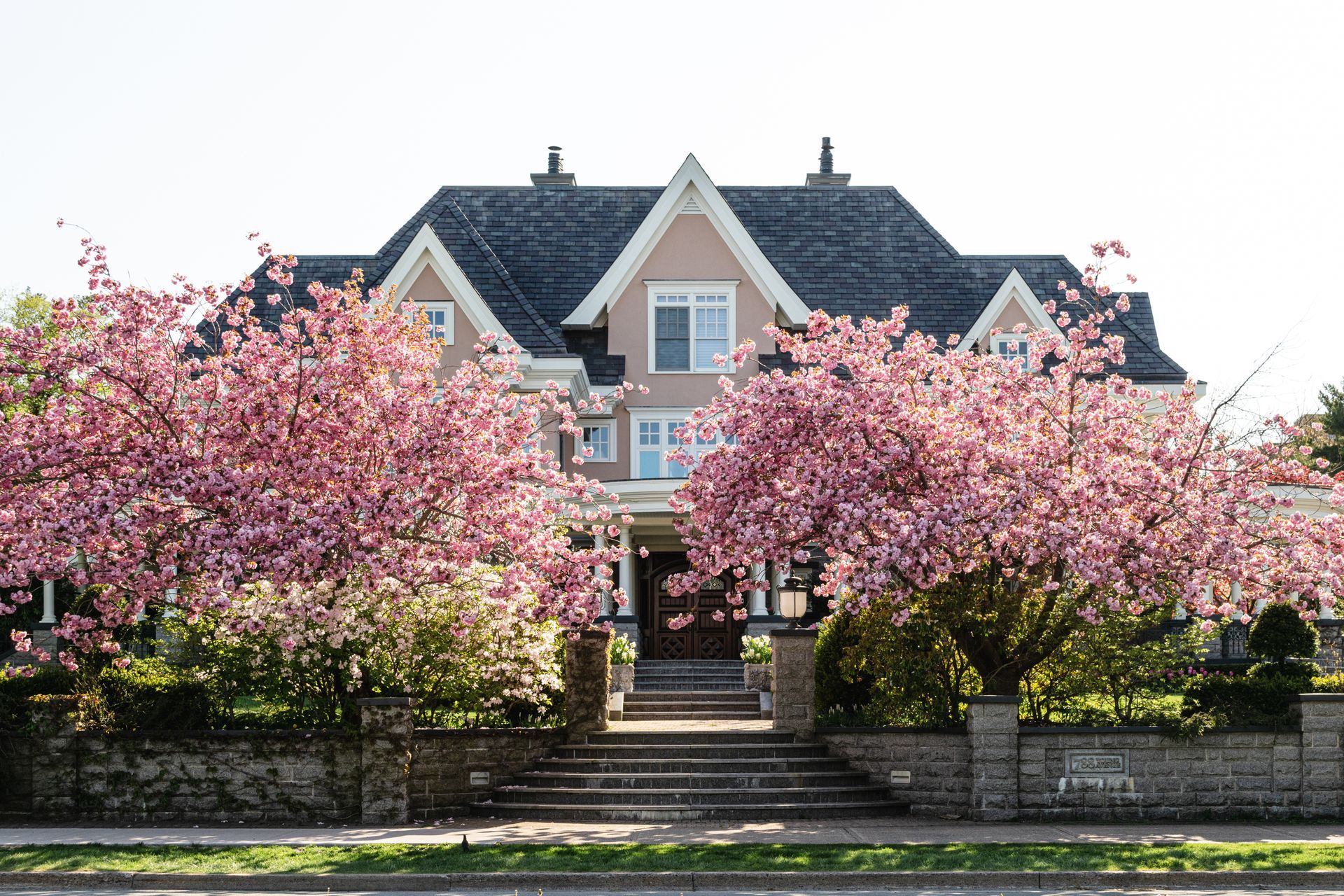
Spring has finally sprung! The days are longer, the flowers are blooming, and there's a fresh sense of possibility in the air. It's the perfect time to give your home the attention it deserves after the long, cold months of winter. Not only is spring cleaning important for tidying up your living space, but it’s also an essential time to tackle those maintenance tasks that help ensure your home stays in top shape all year long. At Higher Point General Contracting, we're here to help you with some key spring maintenance reminders to keep your home safe, efficient, and comfortable. 1. Inspect Your Roof Winter can take a toll on your roof, from snow and ice to harsh winds. Now that the weather is warmer, take a good look at your roof to ensure there’s no damage. Look for missing or cracked shingles, leaks, or areas where moisture may have seeped through. If you’re not comfortable getting up there yourself, it’s worth having a professional roof inspection to catch any hidden issues before they turn into costly repairs. 2. Clean Your Gutters Clogged gutters are a common cause of water damage to homes, especially during the spring rain showers. Remove any debris from your gutters, including leaves, twigs, and dirt, and check for proper drainage. It’s a good idea to inspect downspouts as well, ensuring they’re not clogged and that water flows freely away from your foundation. 3. Examine the Exterior As you move through your spring cleaning routine, don’t forget to inspect the exterior of your home. Look for cracks in the siding, peeling paint, or signs of wear and tear from the elements. Touching up paint and sealing any cracks can help protect your home from further damage and keep it looking its best. If you notice any damage that may require repair, now’s the time to address it before the summer heat makes the job more difficult. 4. HVAC Maintenance Your HVAC system has been working hard throughout the winter months, and it's time to give it a little TLC. Start by replacing the air filters to ensure better air quality and system efficiency. Consider scheduling a professional HVAC inspection to check for any underlying issues, such as leaks or worn-out components. This will help ensure your air conditioning system runs smoothly when the warmer months hit. 5. Check Your Windows and Doors Spring is the perfect time to check the seals around your windows and doors. Over the winter, drafts may have formed, leading to higher energy bills. Inspect the caulking around windows and doors for cracks or gaps and re-seal them if necessary. It’s also a good time to clean your windows, inside and out, to maximize natural light and enhance your view of the changing season. 6. Clear the Lawn and Outdoor Areas Your lawn and outdoor spaces need some attention after months of cold weather. Start by clearing away any leaves, dead plants, or debris that has accumulated. If you have a deck or patio, pressure wash it to remove dirt, mold, and grime. This not only makes the space look refreshed but also helps prevent damage over time. Check for any loose deck boards or railings, and address any issues now before you start enjoying the outdoors. 7. Inspect Your Plumbing With spring rains on the way, it’s a good idea to inspect your plumbing for leaks or issues. Check all exposed pipes for signs of rust, corrosion, or leaks, and test your water pressure. If you notice anything unusual, it’s important to address it before it leads to bigger issues, such as flooding or water damage. 8. Test Smoke Detectors and Carbon Monoxide Alarms Safety should always be a priority. Take a few minutes to test your smoke detectors and carbon monoxide alarms. Replace batteries and ensure they are functioning properly. This is a simple but crucial step that can save lives in case of an emergency. 9. Organize Your Storage Spaces While you’re deep cleaning your home, it’s also a great time to organize closets, basements, garages, and attics. Decluttering your storage spaces not only makes it easier to find what you need but also prevents excess weight on shelves or other storage solutions that may not be up to the task. Proper organization can also give you more space to store seasonal items and keep your home neat and tidy. 10. Prepare for Future Projects If you’ve been considering any home improvement projects, spring is the perfect time to plan ahead. Whether it’s remodeling a bathroom, updating the kitchen, or building an outdoor living space, now is when the weather is warming up, and the possibilities are endless. If you need help with any contracting or home improvement projects, Higher Point General Contracting is here to assist with planning, design, and execution. Spring maintenance is an essential part of keeping your home in great shape year-round. With a little effort, you can ensure that your home is comfortable, efficient, and safe. If you need professional help with any of these tasks, from roof repairs to exterior maintenance or even a full renovation, don’t hesitate to reach out to Higher Point General Contracting. We’re here to help you maintain your home and make it the best it can be! Happy Spring! 🌸
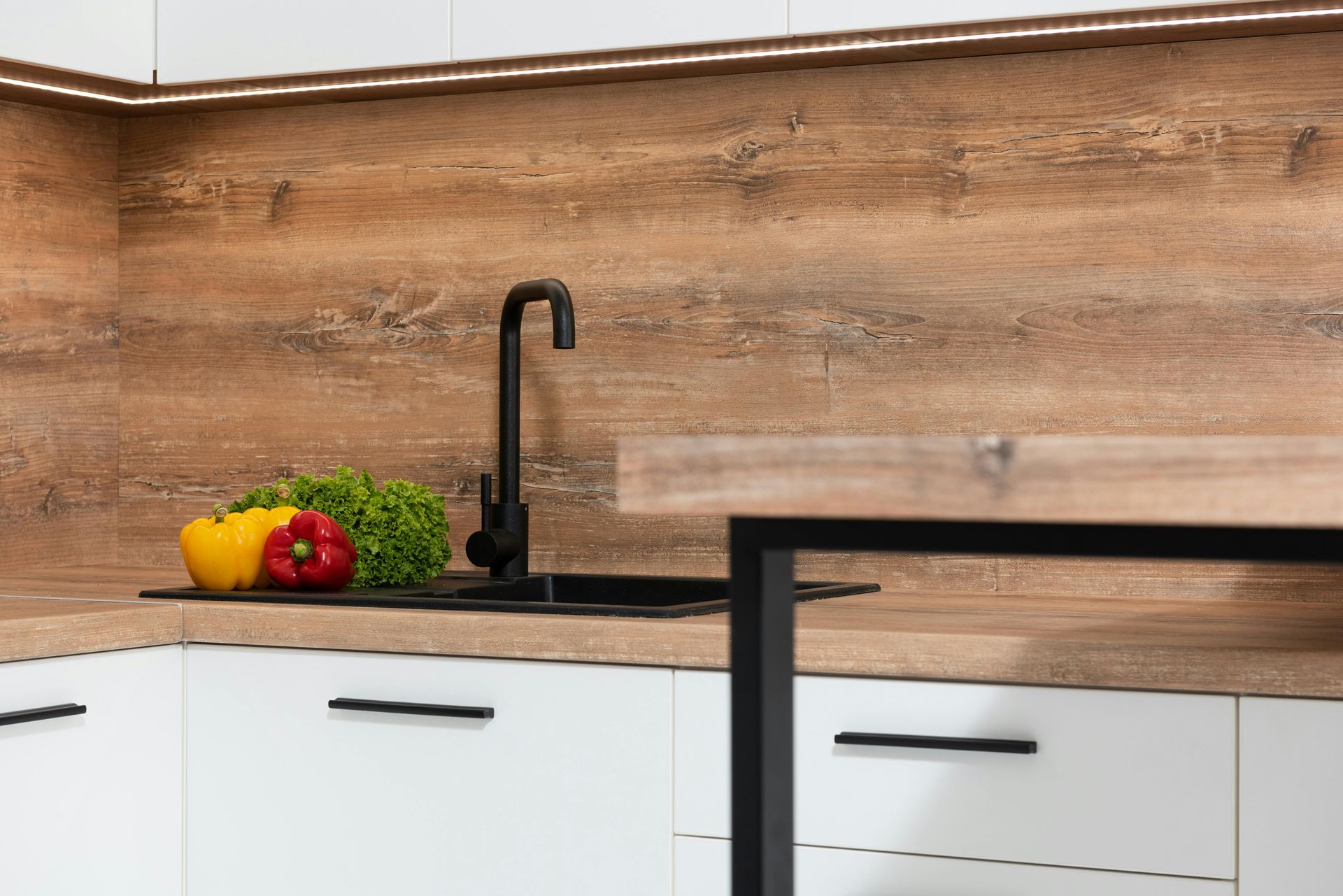
The kitchen has long been the heart of the home, but in 2025, it’s more than just a place to prepare meals—it’s an area for gathering, working, and relaxing. As homeowners continue to prioritize comfort, convenience, and style, kitchen design trends have evolved to reflect these changing needs. Whether you’re planning a full remodel or just a few updates, here are the kitchen trends in 2025 that you’ll want to consider for your next project. 1. Sustainable Materials Take Center Stage As sustainability becomes increasingly important to homeowners, the trend toward eco-friendly materials is stronger than ever. In 2025, we're seeing more kitchens incorporating natural materials like bamboo, reclaimed wood, and recycled stone for countertops. Energy-efficient appliances, low-flow faucets, and LED lighting are also part of the sustainable design movement. The goal is to create a kitchen that’s not only stylish and functional but also environmentally conscious. For countertops, quartz continues to dominate, but with an emphasis on recycled content and earth-friendly production processes. Recycled glass and terrazzo surfaces are also gaining traction, offering a unique look that’s both durable and sustainable. 2. Bold and Contrasting Colors In 2025, kitchen color palettes are getting bolder and more dramatic. While neutrals like whites, grays, and beiges will always be popular, expect to see deep blues, forest greens, and rich earth tones making their way into cabinetry, backsplashes, and even appliances. These hues are being paired with contrasting tones—think navy cabinetry with brass hardware or emerald green cabinets against white countertops. Another fun trend is two-tone kitchens, where upper and lower cabinets are painted in complementary but different shades. It adds depth and visual interest while keeping the space grounded in modern sophistication. 3. Smart Kitchens with Cutting-Edge Technology Technology is increasingly playing a central role in kitchen design. The "smart kitchen" is no longer a futuristic dream—it’s a present-day reality. Homeowners are embracing technology to enhance convenience, energy efficiency, and even safety in the kitchen. From voice-activated faucets and touchless appliances to smart refrigerators that can create shopping lists or suggest recipes based on ingredients you have, technology is making life easier. Another standout innovation is smart lighting systems, which allow you to adjust the mood and ambiance of your kitchen with a simple voice command or mobile app. Integration with other smart home devices, such as thermostats and security cameras, ensures that your kitchen is as connected as the rest of your home. 4. Open Shelving and Minimalist Designs Open shelving continues to be a popular trend in 2025, as it not only adds an air of modernity but also makes it easier to access kitchen essentials. Many homeowners are opting to replace traditional cabinets with floating shelves, allowing them to showcase stylish cookware, glassware, and decorative pieces. This trend pairs well with minimalist design principles, which focus on clean lines, simple shapes, and an uncluttered look. However, while open shelving offers a fresh, airy feel, it also requires a commitment to organization. The trend works best for homeowners who are willing to maintain a streamlined, tidy space where every item is intentionally displayed. 5. Multifunctional Spaces and Layouts With more people working from home, the kitchen is evolving into a multifunctional space that serves as a hub for cooking, socializing, and even working. Homeowners are increasingly investing in kitchen islands and breakfast bars that double as workstations. These spaces are designed with both functionality and comfort in mind, offering plenty of room for meal prep, homework sessions, or casual meetings. Open-concept kitchens are also gaining popularity, allowing for seamless integration with living and dining areas. This setup fosters a sense of togetherness, making the kitchen a perfect place for family gatherings and entertaining guests. 6. Statement Lighting Lighting is one of the easiest ways to make a bold statement in your kitchen, and in 2025, it’s all about dramatic, oversized light fixtures. Pendant lights are making a comeback, but they’re now larger and more sculptural. Bold chandeliers or artistic ceiling fixtures can become the focal point of your kitchen, adding a touch of elegance and modern flair. Under-cabinet lighting remains a popular choice for task lighting, but now it's being incorporated into custom cabinetry to create a soft, ambient glow that enhances the overall aesthetic. Whether it’s recessed lighting or LED strips, well-placed lighting can completely transform the look and feel of your kitchen. 7. Integrated Appliances and Hidden Storage In 2025, sleek, integrated appliances are the norm. Dishwashers, refrigerators, and even microwaves are being concealed behind custom cabinetry to create a more cohesive, streamlined look. The aim is to create a kitchen that feels open and uncluttered, where the appliances blend into the background rather than dominate the space. In addition to integrated appliances, hidden storage solutions are becoming more sophisticated. Pull-out pantries, deep drawers for pots and pans, and pull-out spice racks are just a few examples of how homeowners are maximizing storage in their kitchens. These clever solutions help maintain a tidy, organized space without sacrificing style. 8. High-Performance, Commercial-Style Kitchens For those who love to cook, the rise of commercial-style kitchens continues in 2025. Expect to see professional-grade appliances like large-capacity refrigerators, double ovens, and 48-inch ranges becoming more common in home kitchens. These high-performance appliances are not only built to last but also provide the functionality that serious home cooks crave. With this trend, homeowners are opting for sleek, modern designs that evoke the professional kitchens of top chefs. Stainless steel finishes, heavy-duty cooking equipment, and oversized ranges give the kitchen a polished, industrial look while maintaining a high level of practicality. Conclusion The kitchen trends of 2025 highlight a blend of functionality, sustainability, and creativity. Whether you’re embracing smart technology, bold colors, or multifunctional layouts, the goal is to create a kitchen that enhances both your lifestyle and your home’s overall aesthetic. At Higher Point General Contracting, we’re excited to bring these trends to life in your next kitchen renovation project. With our expertise and attention to detail, we’ll work with you to craft a space that is not only beautiful but also tailored to your needs and style. Ready to bring your dream kitchen to life? Contact us today to get started on your next renovation project!

We are thrilled to announce that Higher Point General Contracting has been nominated for the 2025 Montco Happening List! This is a huge honor for our team, and we couldn't be more excited to share this milestone with our clients, partners, and community. If you've worked with us, you know that we pride ourselves on excellence, professionalism, and customer satisfaction in every project we take on. Now, we’re asking for your support to help us secure the title of Best General Contractor/Home Remodeling! What Is the Montco Happening List? The Montco Happening List is an annual celebration of the best businesses, services, and professionals in Montgomery County, Pennsylvania. It’s a platform where locals come together to recognize and vote for their favorite businesses across dozens of categories, from food and dining to health, entertainment, and home services. The Happening List is a trusted guide to the region’s finest and most popular offerings, making it a prestigious honor for businesses to be nominated. For Montgomery County residents, the Happening List serves as a go-to resource to find the best the area has to offer, while giving businesses like ours the recognition they deserve. This year, Higher Point General Contracting is thrilled to be in the running for Best General Contractor—a testament to our dedication to providing top-tier contracting services. Why It’s Exciting to Be Nominated Being nominated for the 2025 Montco Happening List is an exciting milestone for several reasons: Recognition of Excellence: It highlights the hard work, dedication, and craftsmanship that our team has consistently delivered to our clients. We’ve built a reputation for creating exceptional, high-quality spaces, whether it's a residential home renovation, a commercial project, or a custom build. Community Support: This nomination is a reflection of the trust and loyalty of our clients. We believe in creating long-lasting relationships with the people we serve, and this recognition is an affirmation that we’ve earned that trust. Opportunity for Growth: The Happening List provides incredible visibility for businesses in Montgomery County, giving us a chance to reach even more people who could benefit from our services. It’s an exciting opportunity to continue growing and improving as a general contractor in the local community. How to Vote for Higher Point General Contracting Now that we’ve been nominated, we need your help to win! Voting is simple, and we would be incredibly grateful for your support. Here’s how you can cast your vote for Best General Contractor: Visit the Montco Happening List Website: Go to Montco Happening List Voting Page . Select Higher Point General Contracting: Look for Higher Point General Contracting in the list of nominees and click on our name to cast your vote. Verify Your Email: Make sure to check your email for a verification code, and plug it into the voting page to complete your vote. This is very important, as your vote will not count without completing this step. Submit Your Vote: Once you’ve selected us, submit your vote! Feel free to share with your friends and family to encourage them to vote as well! Remember, voting is quick, and every vote counts. We truly appreciate your support in helping us bring home this exciting recognition! Thank You for Your Continued Support This nomination wouldn’t be possible without the amazing clients and partners who have trusted us with their projects over the years. Your belief in Higher Point General Contracting is what drives us to continue exceeding expectations, and we are so grateful to have had the opportunity to work with you. Winning the 2025 Montco Happening List title for Best General Contractor would be the ultimate honor, and we can't do it without you. Please take a moment to vote, and let’s make this happen! Thank you for helping us reach new heights, and we look forward to serving you for many more years to come! Vote now and spread the word—let's win this together!


